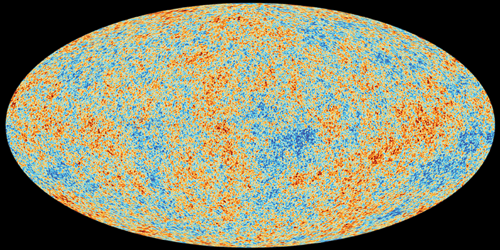Does a hidden mirror universe influence our world?
One of the fundamental parameters of our universe is the Hubble constant H0. It indicates the speed with which distant objects move away from us and thus determines the fate of the entire universe. Today we know that it is not a constant in the strict sense, since H0 changes with time.
However, science has a fundamental problem with it. Depending on how it is measured, its value differs. The difference between the measurement methods even grows the more precise the measurements are. If H0 is calculated from the standard model of cosmology (Lambda Cold Dark Matter, ΛCDM), the values are significantly lower than if the actual velocity of distant objects is measured precisely. Cosmologists are trying to resolve this discrepancy by changing our current cosmological model. The challenge, however, is that this model otherwise gives pretty good predictions about reality. So you have to change it without causing discrepancies elsewhere.
A team from the University of New Mexico and the University of California, Davis, may now have found an interesting way to do this. The researchers are using the cosmic microwave backgriund (CMB), the “echo of the big bang. The temperature and polarization patterns of the CMB were mainly shaped during the recombination period of the universe, when electrons and ions combined to form neutral atoms. The length scale of these patterns determines H0, but can only be estimated by assigning values to certain processes such as the rate of photon-electron scattering during recombination and the expansion rate of the universe at that time.
In the new study, the team shows that by appropriately scaling the values assigned to these processes, they can obtain an H0 value derived from the ΛCDM that matches the value derived from the redshift (i.e., the velocity of distant objects). With this type of change, all other physical constants would remain the same. Almost all of them – the relative abundances of deuterium and helium in the universe – the modified model predicts incorrectly. But this problem, the team says, would be easier to solve than the H0 discrepancy.
If the universe somehow exploits this symmetry, the researchers come to an extremely interesting conclusion: that there is a mirror universe very similar to ours, but invisible to us – except through the gravitational influence on our world. Such a “mirror” dark sector would allow effective scaling of gravitational rates in free fall while respecting the mean photon density, which is accurately measured today. “In practice, this scaling symmetry could only be realized by including a mirror world in the model – a parallel universe with new particles that are all copies of known particles,” said Francis-Yan Cyr-Racine of the University of New Mexico. “The idea of a mirror world first emerged in the 1990s, but until now it has not been recognized as a possible solution to the Hubble constant problem. “It may seem crazy at first glance, but such mirror worlds have received a lot of attention in other contexts because they can help solve important problems in particle physics,” Cyr-Racine explains. “Our work allows us to connect the phenomenon to an important problem in cosmology for the first time.”

(Image above: PantherMediaSeller / depositphotos.com)